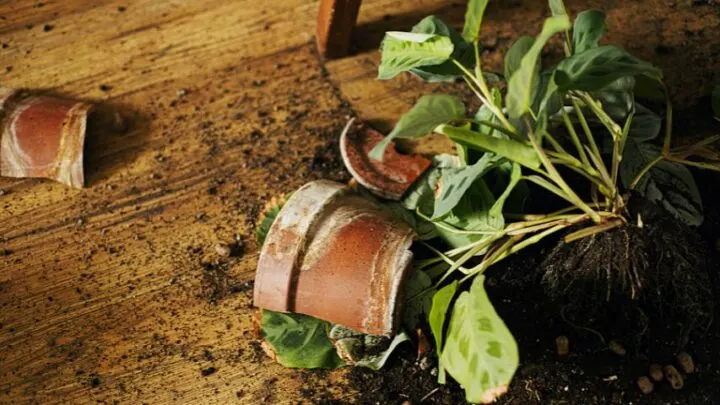If the leaves of your prayer plant turn yellow, it indicates that your plant care needs to be adapted.
Table of Contents
Why is My Prayer Plant Turning Yellow?
The main reason a prayer plant turns yellow is over- and underwatering. Overwatering eventually leads to root rot, while underwatering dries the cells out. Other factors have to do with the plant’s growing conditions: the correct amount of indirect light, well-drained soil, and a warm, humid atmosphere.
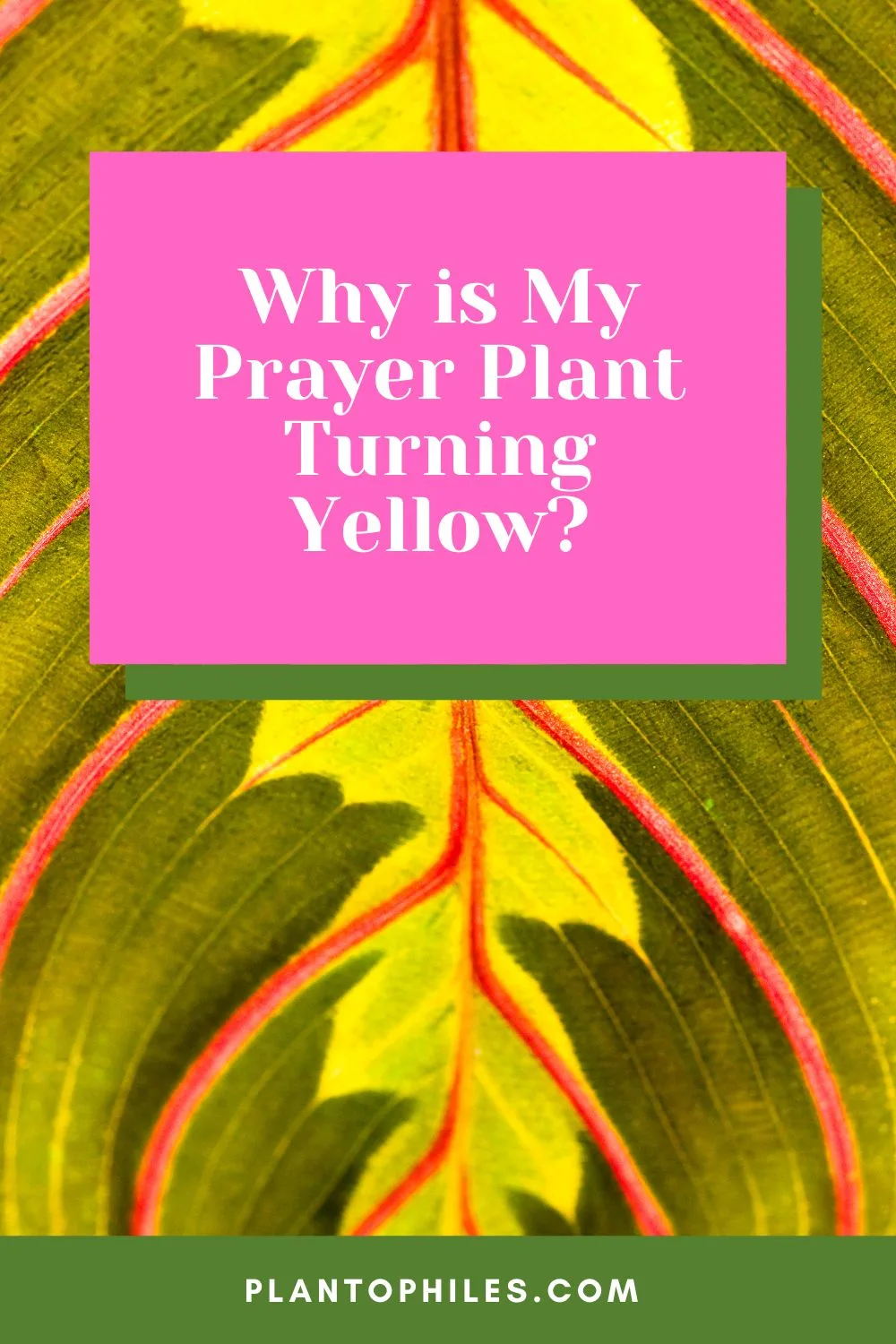
This post identifies and unpacks the most common reasons your prayer plant turns yellow that I have found out over the years.
To help your Maranta leuconeura (botanical name) get back to health, it is vital to understand the underlining causes. Only then can you take the appropriate steps to help the plant.
Prayer Plant Leaves Turning Yellow- 7 Reasons And Remedies
1. You are Overwatering your Prayer Plant
The natural growing conditions of the prayer plant are the floor of the rainforest. They receive bright indirect sunlight in humid conditions.
The soil they grow in is damp, but it does not become soaked. Soggy soil leads to root rot.
The roots need airflow. Insufficient airflow due to waterlogging suffocates the roots.
Plants show if they are unwell through their leaves.
If the soil is too soggy and compacted. the leaves may turn yellow, and the plant may eventually get root rot and die.
Remedy
Only water once the soil is almost dry. Never water when the potting mix is still wet.
1. You Prayer Plant Gets Too Much Light
If the leaves of your prayer plant turn yellow, your plant may be receiving too much light. The plant needs bright indirect light. But too much direct sunlight can scorch and burn the leaves. It can also lead to foliage turning yellow.
Because much bright sunlight causes the leaves to turn pale and even yellow.
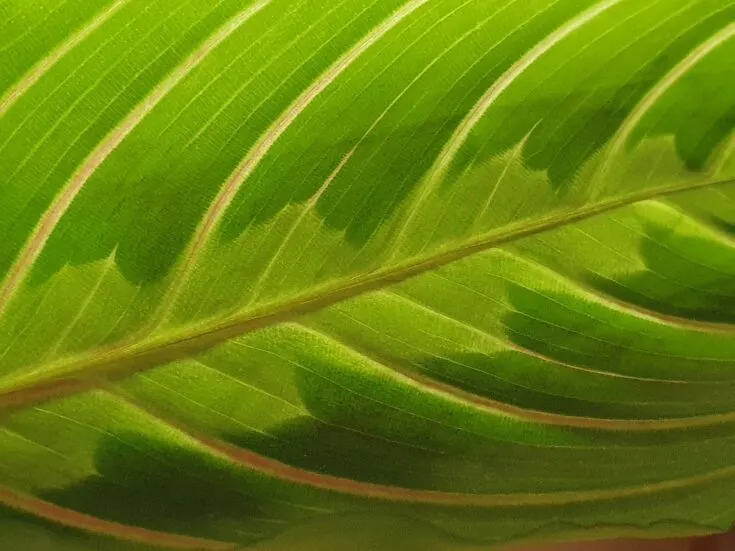
Remedy
The prayer plant should be placed in an area receiving indirect light, such as an eastern- or western-facing window, according to NC State University.
Move your plant to a location where it gets a max. of 4 hours of direct sun. Eastern- and western-facing windows are ideal because they get direct morning or afternoon sun. The sun is strongest during midday.
So if you are placing your plant in a southern window, you have to ensure it is a few feet (meters) away from the window. So the light does not fall directly onto the leaves.
2. Your Maranta leuconeura is Underwatered
All houseplants need the correct amount of water, which is one of the main ingredients for photosynthesis. It is also a vital part of plant cells.
A plant absorbs some water through its leaves, but a lot of the water it needs is absorbed through the roots.
The water also carries essential macronutrients and micronutrients such as nitrogen (N), phosphorus (P), and potassium (K), as well as manganese (Mn) and iron (Fe). These are vital for the plant’s growth.
Too little water means the plant is not absorbing enough water and nutrients to grow and thrive. The prayer plant dries out. The leaves get yellow.
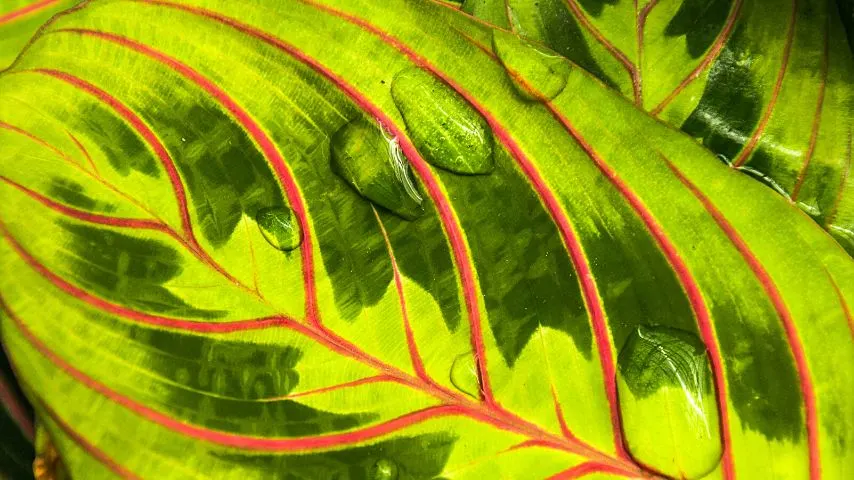
They can’t take up any more nutrients, so the leaves will begin to turn yellow. With too much water, the roots effectively begin to drown.
The roots may also develop root rot.
Remedy
Water frequently and stick to a routine. About once every seven days is perfect. Water more often in summer and less often in winter.
Always use your index finger and test the soil. If it is dry up to 2 inches (5 cm), it is time to water your indoor plant.
3. Root Rot on a Prayer Plant
Root rot is a condition where the roots of a plant begin to rot. The wet conditions and lack of air promote the growth of bacteria and fungi that cover the roots.
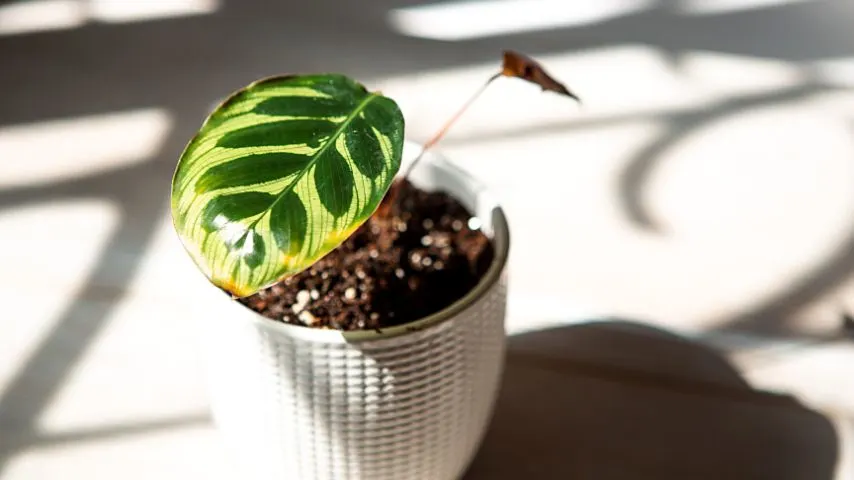
They begin to turn brown and become covered with slime.
According to RHS, Root rot is caused by fungus-like organisms (Oomycete) in the soil called Phytophthora.
Remedy
Do not overwater the plant when you spot the soil being too soggy and not drying within 2-3 days max. take your houseplant out of the pot.
Remove the potting soil and inspect the roots. If there are mushy sections, cut them off and rinse the remaining roots under running water.
Exchange the soil with new potting soil. Use potting soil containing coarse materials that can still hold some moisture, such as peat, perlite, and orchid bark.
Disinfect the pot. This way, you can avoid root rot from spreading to healthy roots.
Only water about once a week. Ensure your pot has drainage holes. This way, excess water can drain out of the pot.
4. Wrong Soil
Prayer plants grow best in well-draining, organically rich soils, giving them the nutrients they need and preventing waterlogging.
Regular potting soil is too dense.
Placing a layer of small stones on the bottom of the pot before filling it with the correct soil does not help. This is a common myth that is often shared.
The soil will just compact and become wet above the stones. Stones and pebbles at the bottom of the pot do not act as a drainage layer.
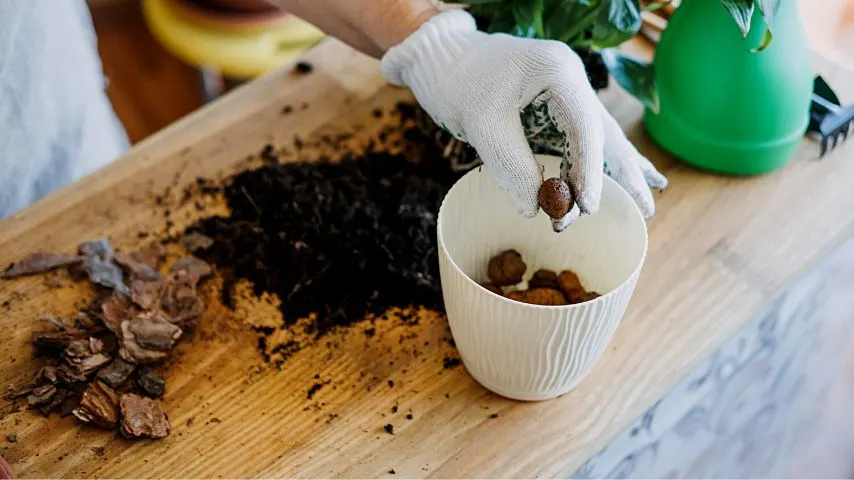
If the plant develops yellow leaves, the soil may be too dense.
Remedy
Ensure you use well-draining soil that is not too compact. Use well-draining soil containing peat, perlite, and orchid bark.
5. Insufficient Humidity
Prayer plants grow best in humid conditions. A humidity of 60-80% is ideal. Dry air can dry out the leaves. The leaves become yellow. They also often get dry edges. The leaf tips become dry as well.
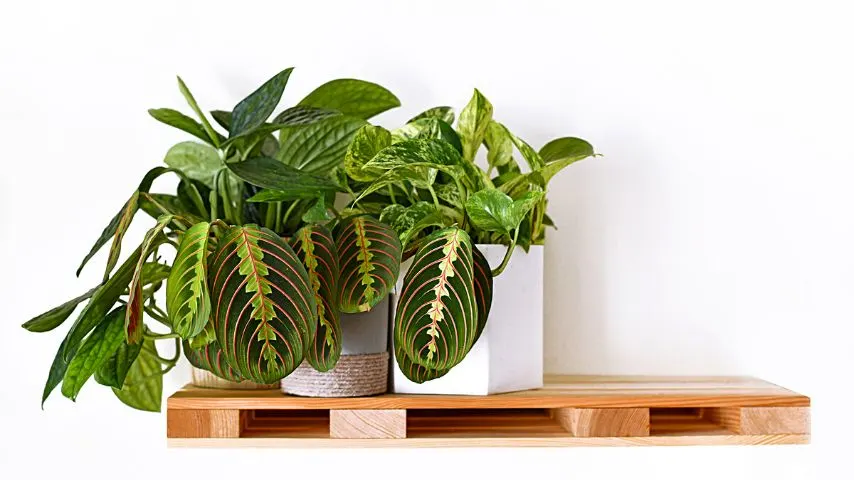
Remedy
Do not mist the leaves. This can lead to bacterial and fungal growth if the airflow is insufficient. Put your Maranta close to other plants. Use a pebble tray underneath the plant. Fill it with water. Refill it whenever it is empty.
Use a humidifier to increase the humidity indoors. You can achieve levels of 60%.
6. Temperature Stress
The temperature in a tropical rainforest is warm. A prayer plant needs to be kept relatively warm. A temperature between 65-85 degrees Fahrenheit (18-29 degrees Celsius) is ideal.
If the temperature is too high or too low for an extended time, leaves get yellow.
Remedy
Avoid extreme temperatures by taking note of microclimates. In winter, make sure your Prayer plant is not directly in front of a window. Relocate your prayer plant to a warmer area in the house. Avoid heating units.
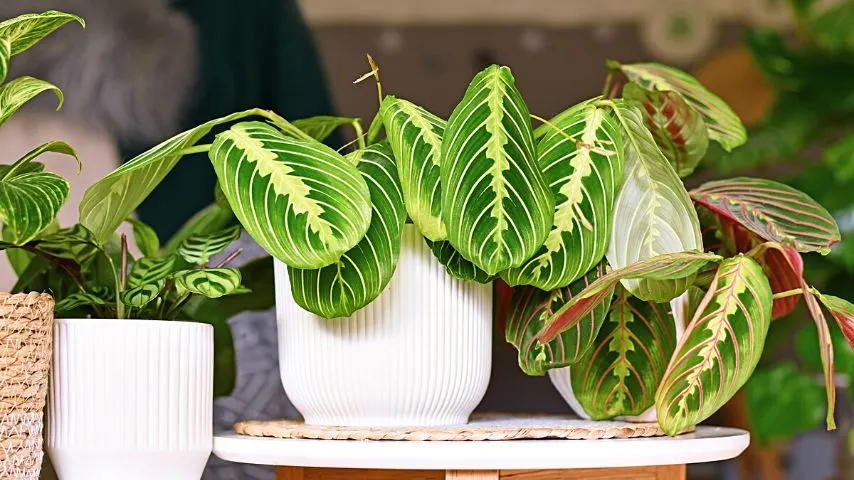
7. Incorrect Amount of Fertilizer
Prayer plants are no different from other plants. They need essential nutrients to grow well.
If a houseplant isn’t fertilized about once a month in the growing season, signs are yellowing leaves.
Don’t overdo the fertilizer, or you may burn the plant’s roots. It will develop yellow leaves.
Remedy
Use a well-balanced houseplant fertilizer diluted to 1/2 strength once a month. Fertilize once a month in spring and summer. Do not fertilize in autumn and winter. This is when your plant is dormant.
Frequently Asked Questions
Can my prayer plant develop yellow leaves if I don’t apply fertilizer?
Insufficient nutrients can affect a prayer plant, making its leaves turn yellow. Another reason for yellowing prayer plant leaves is if its roots are waterlogged. Another factor is there may simply be too few nutrients in the soil. The plant may develop yellow leaves, and it will need to be fertilized.
Can I grow my prayer plant outside?
Growing a prayer plant outside is possiblein USDA hardiness zones 10-12.
Conclusion On Why Prayer Plants Turn Yellow
Prayer plants turn yellow because of:
- Overwatering
- Underwatering
- Too much direct sunlight
- Temperature stress
- The wrong soil
- Insufficient humidity
- Too little or too much fertilizer

Daniel has been a plant enthusiast for over 20 years. He owns hundreds of houseplants and prepares for the chili growing seasons yearly with great anticipation. His favorite plants are plant species in the Araceae family, such as Monstera, Philodendron, and Anthurium. He also loves gardening and is growing hot peppers, tomatoes, and many more vegetables.

